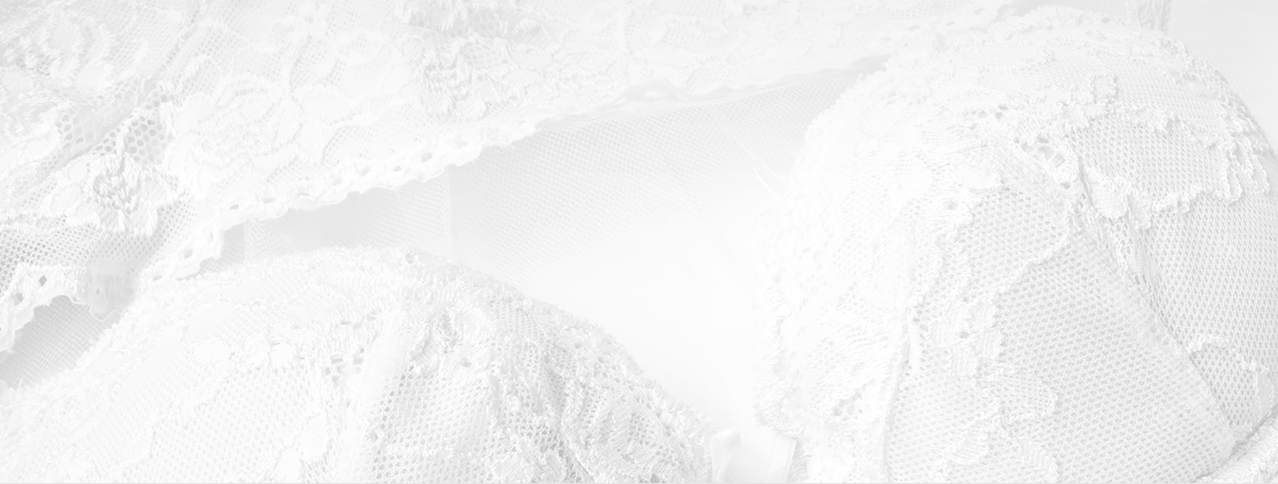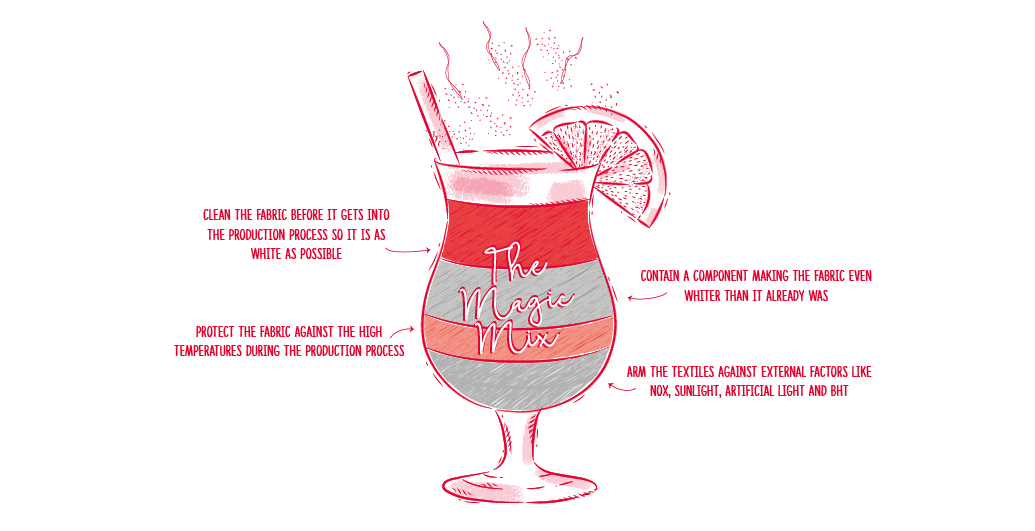Creating your triple 4 cocktail
A business woman is away on holiday. She buys a white lace cocktail dress to celebrate her time off. As she walks down the beach of Corsica, she can feel the sun warming her skin. Later that day, her husband takes her out to dinner at a local restaurant at the boulevard. They order a meal and watch cars and other tourists go by. Just before they go to sleep, the woman changes into her nightwear and leaves her new dress on a chair in the hotel room.
To her, this was a perfect summer day. To the white cocktail dress, it was a rather challenging one. Within only a couple of hours, this is what it endured:
Phenolic yellowing: BHT molecules in the packaging material reacting with NOx gasses.
Ultraviolet radiation: Radiation from sunlight, speeding up the yellowing process.
Nox gasses: Air pollution and car exhaust.
Value-for-money
The yellowing of white clothes is one of the main problems of textile manufacturers and brand managers. As soon as their fabrics leave the plant, their products are exposed to all sorts of external influences they cannot control. Take the example of the business woman on Corsica. She likes spending money on high quality garments, but still they risk discolouring because of the sun, gasses in the air and BHT that causes phenolic yellowing. Despite all the external influences, however, the business woman expects her clothes to stay white. She does not care for NOx gasses and she would never think about avoiding the sun for the sake of her clothes. Clearly, customers expect ultimate colour fastness and yellowing resistance of your products, even long after you have sold them. The question that rises is: can you live up to this expectation?
Working the system
Before you get to work on your solution, you first need to know how white exactly your products should be. Unfortunately, judging the whiteness of a piece of clothing is far from easy. This is why the textile industry works with a system.
Resistance to light (artificial or sunlight), NOx gasses and phenolic yellowing can be rated on a scale. The lower the number, the poorer the colour fastness. The higher the number, the better the resistance to yellowing factors. In the textile sector, reaching number 4 for all three main yellowing factors has become the ultimate goal. White clothes that score ‘triple 4’ have a level of colour resistance that lives up to the high standards of the customer, as they keep their bright colour under nearly all circumstances. Especially in the high segment, this will give you a huge advantage.

So how do you do it?
If you want your fabrics to reach a triple 4 level, you have to use a combination of products that fight all yellowing factors at the same time. And as you might have read in our white paper on Extreme Whiteness, there is a lot of yellowing to tackle. Not only does it occur in the customer’s surroundings; yellowing also happens during the production process, during transportation, in the storage room, and in the shop. At Tanatex, we have put a lot of effort and time in developing products that arm fabrics against all of these external influences. As an end result, we usually work with a combination of the following ingredients:
• DIADAVIN® DSP: a washing agent that cleans the fabrics before they get processed
• SPANSCOUR SPARK: protects the fabrics against high temperatures during the production process
• BLANKOPHOR® CLE or PAS: a whitener that also strengthens the hue of the fabric
• TANASSIST® PROSET: a finish that protects the fabrics against NOx and phenolic yellowing caused by BHT
Creating your own cocktail
These four ingredients alone will not get you the best results, though. If you really want to reach triple 4 quality, you will be needing a carefully constructed cocktail. We use the words ‘careful’ and ‘cocktail’ as it is the synergy of the products that will do the trick. Normally, adding chemicals during the production process solves one problem but causes another. For example, many products that preserve the hue of the fabric harden it at the same time. Furthermore, every fabric reacts to sunlight, NOx and heat in a different way. This means you will have to extensively test their colour resistance and fastness in order to get to the right dosage of your ingredients. Only then will you get the best out of their combination.

In the long run
So in order to reach triple 4, you need the right ingredients, but also the right composition. Does it take extra time? Yes. Does it take in-depth knowledge on whitening textiles? Yes. Does it take extra money? At first yes, but not in the long run. If you use the knowledge you derived from the tests, you can create an anti-yellowing product and provide your customers with the highest quality there is. And that means you can set yourself apart from your competition. So triple 4 is within reach, and so is the loyalty of your end-customer.





